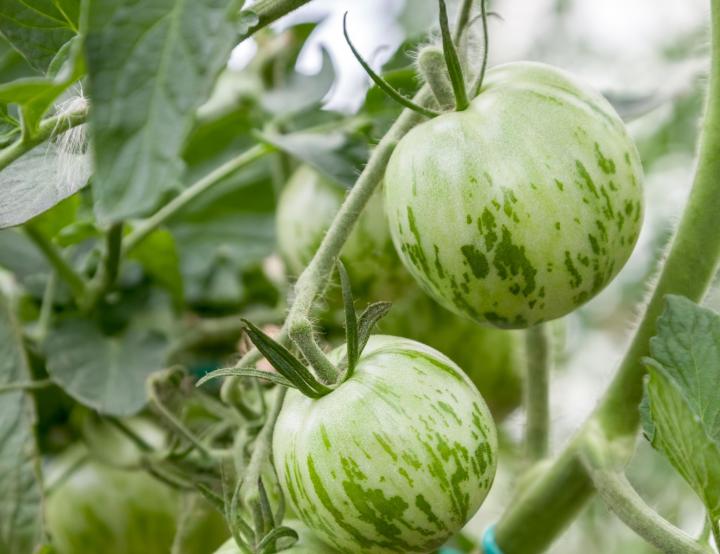Growing Tomatoes Guide
Our Growing Tomatoes Guide takes you from planting to harvesting! Find out when to plant America’s favorite garden crop, the best way to grow tomatoes, how long it takes a tomato to bear fruit, and what tomatoes need to thrive. We’ll touch on how to transplant, stakes and cages, the best tomato varieties, and more tomato tips!
There’s a reason why tomatoes are the #1 home garden vegetable. The taste of a tomato right off the vine is incomparable to a typical grocery store type.
Tomatoes are warm-weather vegetables and sun worshippers!
- In northern regions, tomato plants will need at least 6 hours of sunlight daily; 8 to 10 hours are preferred.
- In southern regions, light afternoon shade (natural or applied, e.g., row covers) will help tomatoes to survive and thrive.
How Long Does It Take to Grow a Tomato?
This is one of our most common questions. The exact “days to harvest” depends on the cultivar and it can range from 60 days to more than 100 days.
In addition, tomatoes can not be started too early in the ground as they are a tender warm-season crop that can not bear frost. In most regions, the soil is not warm enough to plant tomatoes outdoors until late spring and early summer except in zone 10, where they are a fall and winter crop. See when to start tomatoes for your location.
Due to their relatively long growing season requirements (and late planting date), plant small “starter plants” or transplants instead of seeds. Choose young tomato plants from a reputable nursery. Good starter plants are short and stocky with dark green color and straight, sturdy stems about the size of a pencil or thicker. They should not have yellowing leaves, spots, or stress damage nor have flowers or fruits already in progress.
Types of Tomatoes
- Determinate tomatoes, better known as “bush” varieties grow 2 to 3 feet tall. These varieties tend to provide numerous ripe tomatoes at one time, do not put on much leaf growth after setting fruit, and tend to fruit for a (relatively) brief period of time. They are generally productive earlier than the vining varieties, and not in the latter part of the growing season. Determinate tomatoes do not require staking or caging. These plants are idea for containers and small spaces. Most paste tomatoes are determine (which works well for making sauce and canning).
- Indeterminate tomatoes, better known as “vining” varieties produce the largest types of mid- to late-season slicing tomatoes all summer and until the first frost. Because indeterminates experience more leaf growth, their production tends to be spread more evenly throughout the season. Indeterminate tomatoes need staking. They are ideal in large gardeners. Most beefsteak and cherry tomatoes are indeterminate.
Tomatoes come in a wide range of flavors as well as colors and sizes, from tiny grape-sized types to giant beefsteaks. The choice also depends on how you will use this versatile fruit in the kitchen. For example, Roma tomatoes are not usually eaten fresh out of hand, but are perfect for sauces and ketchups. Tomatoes do need vigilant care, as the crop is susceptible to pests and diseases. To avoid problems, choose disease-resistant cultivars whenever possible.

Image: Tomatoes aren’t only red! Featured here is the flavorful heirloom ‘Green Zebra,’ a high-yielding indeterminate plant. Credit: VZaitsev/GettyImages
Check out this video to learn more about how to choose tomatoes.
[embedded content]
